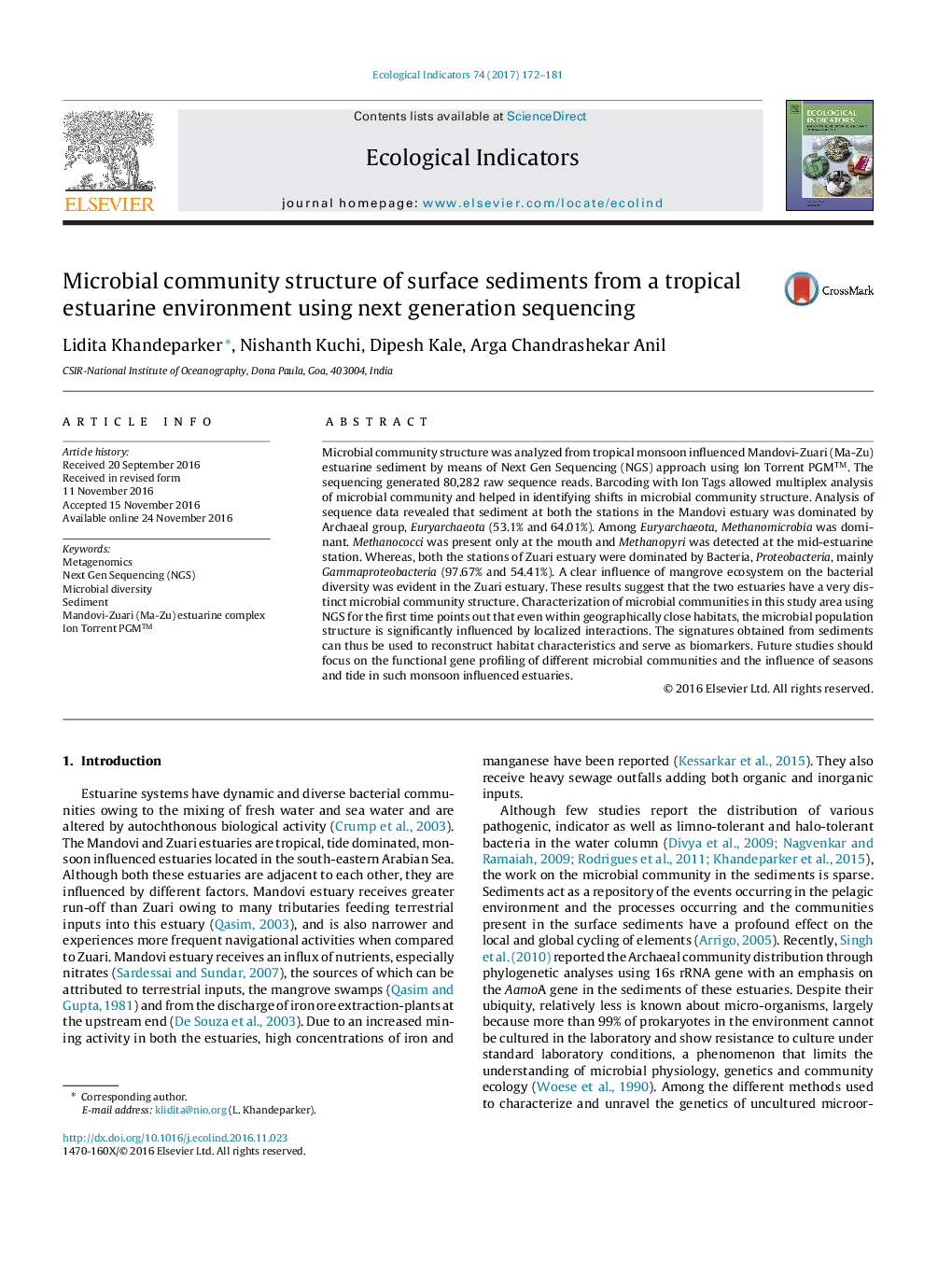| کد مقاله | کد نشریه | سال انتشار | مقاله انگلیسی | نسخه تمام متن |
|---|---|---|---|---|
| 5741845 | 1617128 | 2017 | 10 صفحه PDF | دانلود رایگان |
Microbial community structure was analyzed from tropical monsoon influenced Mandovi-Zuari (Ma-Zu) estuarine sediment by means of Next Gen Sequencing (NGS) approach using Ion Torrent PGMâ¢. The sequencing generated 80,282 raw sequence reads. Barcoding with Ion Tags allowed multiplex analysis of microbial community and helped in identifying shifts in microbial community structure. Analysis of sequence data revealed that sediment at both the stations in the Mandovi estuary was dominated by Archaeal group, Euryarchaeota (53.1% and 64.01%). Among Euryarchaeota, Methanomicrobia was dominant. Methanococci was present only at the mouth and Methanopyri was detected at the mid-estuarine station. Whereas, both the stations of Zuari estuary were dominated by Bacteria, Proteobacteria, mainly Gammaproteobacteria (97.67% and 54.41%). A clear influence of mangrove ecosystem on the bacterial diversity was evident in the Zuari estuary. These results suggest that the two estuaries have a very distinct microbial community structure. Characterization of microbial communities in this study area using NGS for the first time points out that even within geographically close habitats, the microbial population structure is significantly influenced by localized interactions. The signatures obtained from sediments can thus be used to reconstruct habitat characteristics and serve as biomarkers. Future studies should focus on the functional gene profiling of different microbial communities and the influence of seasons and tide in such monsoon influenced estuaries.
Journal: Ecological Indicators - Volume 74, March 2017, Pages 172-181
